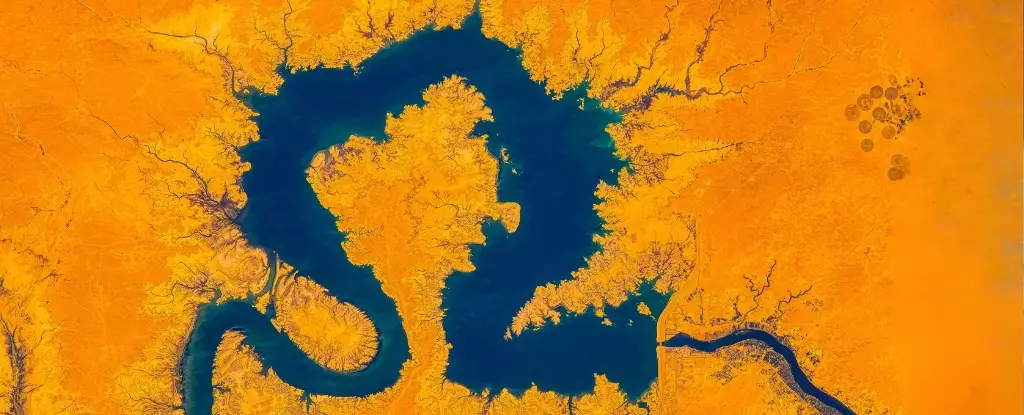In a world where the narrative often emphasizes nature’s sovereignty, recent findings reveal a startling truth: human engineering and resource exploitation are quietly exerting influence on the very fabric of our planet. The construction of dams, a hallmark of modern civilization, is not merely a matter of energy or water management; it is subtly tugging at the Earth’s fundamental dynamics. By trapping trillions of gallons of water behind reservoirs, we’ve altered mass distribution in a way that defies traditional notions of natural change. This redistribution, though seemingly insignificant in everyday terms, has profound implications—shifting Earth’s rotation, influencing magnetic poles, and even subtly impacting sea levels. It’s an awakening to the reality that our relentless pursuit of development does not leave Earth untouched, but instead introduces a new layer of complexity into planetary processes.
The Cascading Consequences of Mass Redistribution
Every dam built is more than a steel or concrete structure—it’s a catalyst for planetary change. When water collects behind dams, it eliminates a vast volume from oceans, causing a measurable drop in sea levels. According to recent research, this process is accounting for roughly a quarter of the sea level change observed this century. But the impact extends beyond mere sea levels. The accumulation of mass on specific regions of the Earth’s surface shifts the planet’s center of gravity, subtly altering its axis of rotation—a phenomenon known as true polar wander. This movement, though measured in centimeters, cascades into shifts in magnetic poles, creating a distorted but significant alteration in how Earth’s magnetic field aligns with the surface. Far from a trivial detail, these shifts can influence everything from navigation systems to the planet’s shielding against solar radiation.
Humans as Unintentional Planetary Architects
The implications of these discoveries are both fascinating and disconcerting. For decades, scientists have focused on climate change and carbon emissions as primary threats to Earth’s stability. Yet, here emerges a subtler, equally impactful danger: our own infrastructure. The building of dams across continents has, with unintended precision, redistributed Earth’s mass in ways that influence core dynamics and magnetic stability. This central role of human activity challenges the conventional comfort that Earth’s natural systems operate independently of human intervention. Instead, it compels us to confront the uncomfortable truth: we are, perhaps unwittingly, sculpting Earth’s geophysical characteristics.
The Ethical and Political Dimensions of Doing More Harm Than We Imagine
The societal response to these revelations should be laden with urgency and introspection. If human endeavors—primarily in the form of water management—are influencing planetary processes in ways that were previously unimaginable, responsible stewardship becomes an ethical imperative. Policy decisions surrounding dam construction and water resource management must now consider long-term planetary impacts, not just immediate benefits or economic gains. This newfound knowledge underscores the importance of a more cautious, integrated approach to development—one that recognizes the interconnectedness of Earth systems. Ignoring this could exacerbate existing challenges like sea level rise, magnetic field alterations, and climate variability, ultimately jeopardizing the stability of life on Earth.
Challenging Our Assumptions About Earth’s Resilience
What does this mean for our understanding of Earth’s resilience? For centuries, humans perceived our planet as an unchangeable, vast entity capable of absorbing and adapting to superficial disturbances. However, emerging evidence suggests that Earth’s inner dynamics are more sensitive to surface-level changes than we had ever appreciated. Our engineering marvels, small in size compared to global scales, are capable of influencing core processes and magnetic fields. This realization should serve as both a warning and an awakening: our relentless exploitation of planetary resources is not just a matter of environmental degradation but a profound interference with Earth’s intrinsic systems. If we continue down this path unchecked, we risk crossing thresholds that could destabilize entire fundamental processes—including magnetic shielding and tectonic stability—which are critical to sustaining life itself.
The challenge lies in shifting societal priorities from short-term gains to long-term planetary stewardship. Recognizing the power of human influence, even when subtle, is the first step toward a more responsible and sustainable interaction with our planet’s complex, interconnected systems. Only then can we hope to balance development with preservation, ensuring Earth remains resilient in the face of our relentless pursuit of progress.

Leave a Reply